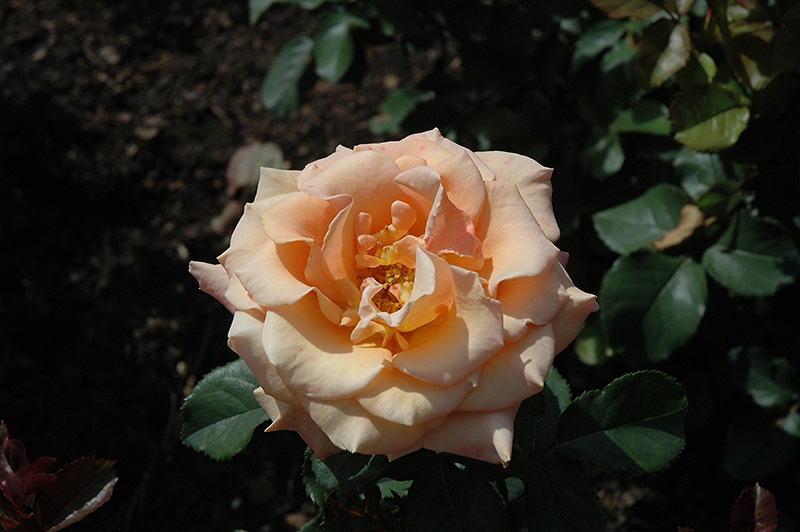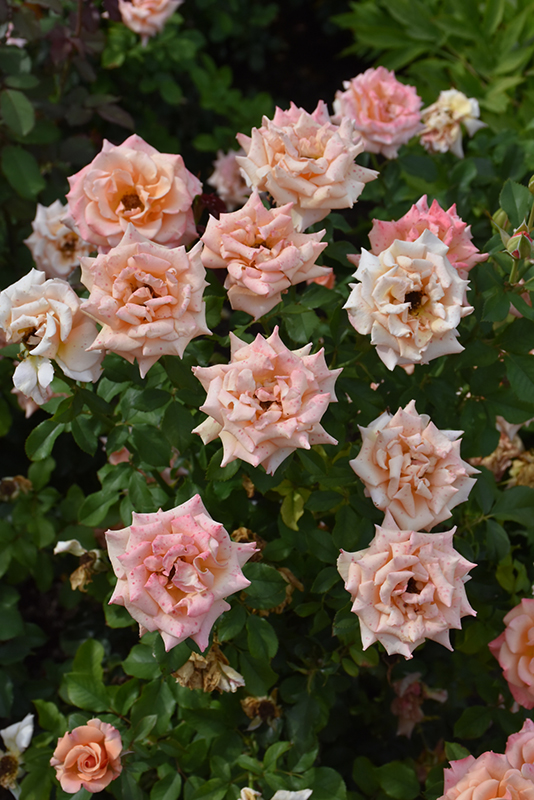VANDERMEER
PLANT LIBRARY
Find the perfect plant for your space by browsing through this extensive selection that we typically carry every year.
This library is for information purposes only.
Singin' in the Rain Rose
Rosa 'Singin' in the Rain'
Height: 6 feet
Spread: 4 feet
Sunlight:
![]()
![]()
Hardiness Zone: 7a
Group/Class: Floribunda Rose
Description:
Glowing apricot blooms with copper reverse and dark green, glossy foliage for a backdrop; mild musky fragrance; well suited for containers, as a landscape accent, or a flowering hedge
Ornamental Features
Singin' in the Rain Rose features showy lightly-scented double peach flowers with a coppery-bronze reverse at the ends of the branches from late spring to mid fall. The flowers are excellent for cutting. It has dark green deciduous foliage. The glossy oval compound leaves do not develop any appreciable fall colour.
Landscape Attributes
Singin' in the Rain Rose is a multi-stemmed deciduous shrub with an upright spreading habit of growth. Its average texture blends into the landscape, but can be balanced by one or two finer or coarser trees or shrubs for an effective composition.
This shrub will require occasional maintenance and upkeep, and is best pruned in late winter once the threat of extreme cold has passed. It is a good choice for attracting bees to your yard. Gardeners should be aware of the following characteristic(s) that may warrant special consideration;
- Spiny
Singin' in the Rain Rose is recommended for the following landscape applications;
- Mass Planting
- Hedges/Screening
- General Garden Use
Planting & Growing
Singin' in the Rain Rose will grow to be about 6 feet tall at maturity, with a spread of 4 feet. It tends to fill out right to the ground and therefore doesn't necessarily require facer plants in front, and is suitable for planting under power lines. It grows at a fast rate, and under ideal conditions can be expected to live for approximately 30 years.
This shrub does best in full sun to partial shade. It does best in average to evenly moist conditions, but will not tolerate standing water. It is not particular as to soil type or pH. It is highly tolerant of urban pollution and will even thrive in inner city environments. This particular variety is an interspecific hybrid.






